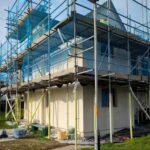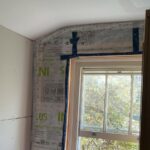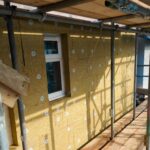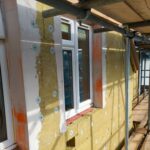In Retrofit by Robert Wheeler / 18 January 2024 / 0 comments
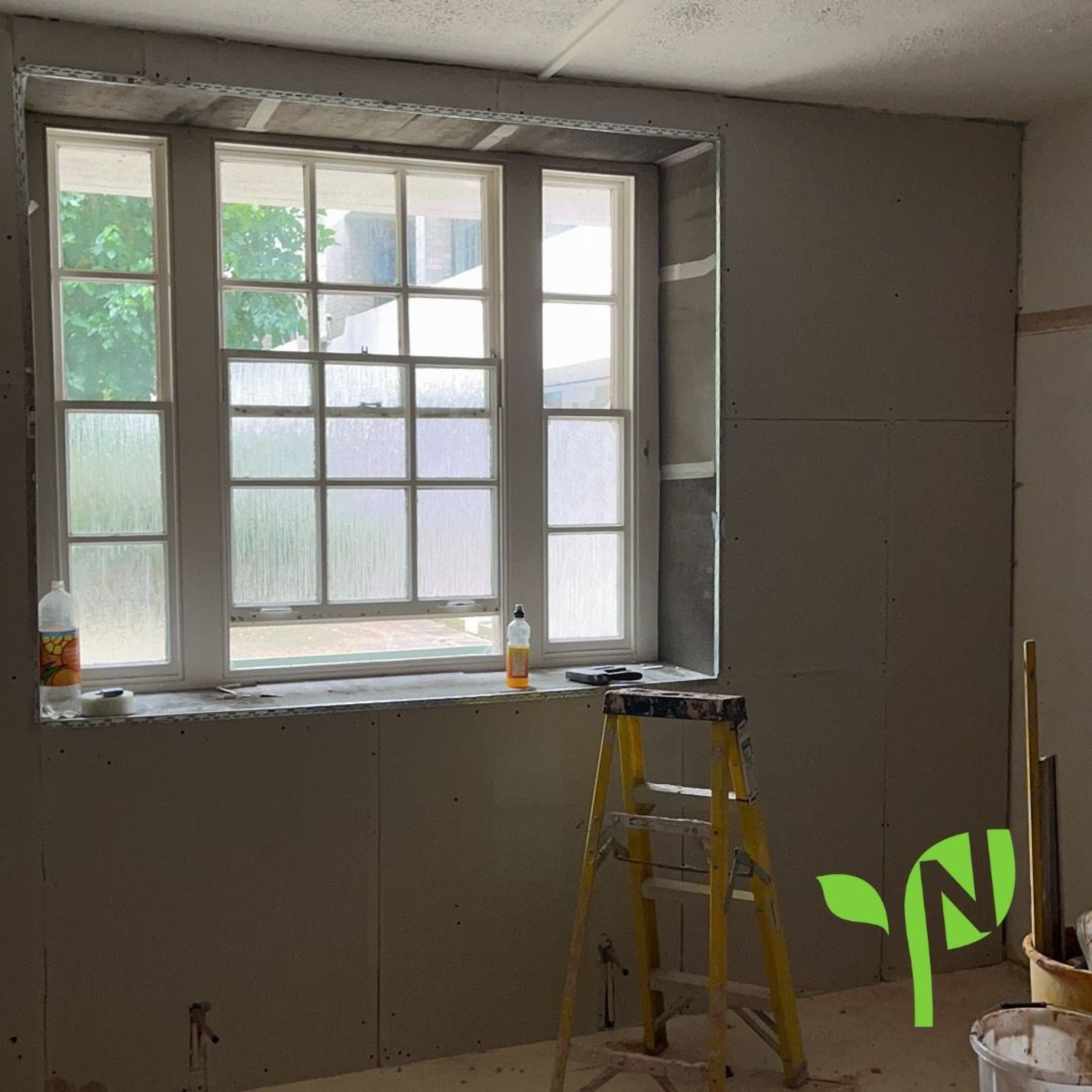
Home retrofitting is a process that involves making significant upgrades and improvements to an existing house in order to enhance its energy efficiency, sustainability, and overall comfort. With the increasing focus on reducing carbon emissions and conserving energy, retrofitting has become a popular option for homeowners seeking to minimize their environmental impact and lower their energy bills. However, one crucial aspect that homeowners often consider is the time it takes to complete a home retrofit.
In this blog post, we will explore the factors that influence the duration of a home retrofit project, the steps involved in preparing for it, common challenges and delays faced during the process, and strategies to expedite the retrofitting timeline. By understanding the timeline and potential obstacles, homeowners can better plan and manage their retrofitting projects to achieve their desired results efficiently and effectively.
Introduction to home retrofitting
Understanding the concept of home retrofitting
Home retrofitting, in simple terms, refers to the process of upgrading or improving an existing home to make it more energy-efficient, comfortable, and environmentally friendly. It involves making modifications to the building envelope, HVAC systems, insulation, lighting, and other components to reduce energy consumption and improve overall performance.
The importance of retrofitting for energy efficiency
Retrofitting a home is crucial in the quest for energy efficiency. As we strive to reduce our carbon footprint and combat climate change, making our homes more energy-efficient plays a significant role. Retrofitting can lower energy bills, increase comfort levels, reduce greenhouse gas emissions, and contribute to a more sustainable future. Plus, who doesn’t love saving money while saving the planet?
Factors influencing the duration of a home retrofit
Size and complexity of the retrofitting project
The size and complexity of the retrofitting project directly impact the time it takes to complete. A small-scale project like upgrading insulation or replacing windows may take a few days or weeks, while a comprehensive retrofit involving multiple systems and components can stretch into months.
Availability of skilled labor and contractors
The availability of skilled labor and contractors can be a determining factor in the duration of a home retrofit. If there is a shortage of qualified professionals or a high demand for their services, it may take longer to find the right team to carry out the retrofitting work.
Budgetary constraints and funding sources
Budgetary constraints can also influence the timeline of a home retrofit. The availability of funds and the extent of financing or grants can impact the speed at which the project progresses. Securing necessary funds and planning accordingly is essential to avoid any unnecessary delays.
Preparing for a home retrofitting project
Conducting a home energy audit
Before diving into a retrofitting project, conducting a home energy audit is crucial. This assessment helps identify areas of energy loss or inefficiency in your home, guiding you in prioritizing which upgrades will have the most significant impact. It’s like giving your home a performance review!
Identifying retrofitting goals and priorities
Determining your retrofitting goals and priorities is another essential step. Whether you want to focus on improving insulation, upgrading your HVAC system, or implementing renewable energy sources, setting clear objectives will help you stay focused during the retrofitting process.
Securing necessary permits and approvals
Don’t forget the paperwork! Depending on where you live and the scope of your retrofitting project, you may need to secure permits and approvals from local authorities. Be sure to factor in the time required for this process to avoid any unnecessary delays down the road.
The timeline of a typical home retrofit
Initial assessment and project planning
After the preparatory steps, the initial assessment and project planning phase begins. This involves consulting with professionals, finalizing design plans, and determining the timeline and budget. It’s like creating a blueprint for your retrofitting adventure!
Procurement of materials and equipment
Once the plans are in place, it’s time to gather the necessary materials and equipment for the retrofitting project. Depending on the availability and sourcing, this may take some time. Patience is a virtue – especially when you’re waiting for that perfect energy-efficient window to arrive.
Actual construction and installation phase
Now comes the fun part – the actual construction and installation phase. Skilled professionals, like the superheroes of retrofitting, will carry out the necessary work, whether it’s upgrading insulation, installing solar panels, or replacing outdated systems. Sit back, relax, and watch your home transform into an energy-efficient oasis.
Post-construction inspections and fine-tuning
Once the construction and installation phase is complete, it’s time for the final touches. Post-construction inspections ensure that everything is up to code and functioning as intended. Any necessary fine-tuning is done to optimize the performance of your retrofitted home. It’s like the icing on the energy-efficient cake!
Remember, every home retrofitting project is unique, and the duration can vary depending on various factors. By understanding the process and planning accordingly, you can embark on your retrofitting journey with confidence, knowing that a more energy-efficient and comfortable home awaits you.
Common challenges and delays in home retrofitting
Unforeseen structural issues or hidden damages
When it comes to retrofitting your home, you might uncover some surprise guests hiding within your walls – structural issues or hidden damages. These unexpected problems can add time to your project as they require additional attention and sometimes expert opinions to resolve. So, be prepared for some unexpected guests during your retrofitting journey.
Delays in obtaining permits or approvals
Ah, the joys of bureaucracy! One of the common delays in home retrofitting projects is the time it takes to obtain the necessary permits and approvals. Dealing with local authorities and paperwork can be time-consuming, so make sure you carve out some patience in your schedule.
Weather-related disruptions and seasonal constraints
Mother Nature likes to play her part in home retrofitting too. Weather-related disruptions, like rain, snow, or extreme temperatures, can slow down the progress of your project. So, if you’re retrofitting during a volatile season, prepare for some weather-related hiccups along the way.
Strategies to expedite the home retrofitting process
Working with experienced and efficient contractors
Just like finding a good hairstylist, working with experienced and efficient contractors is key to speeding up the retrofitting process. These experts know the ins and outs of the job and can navigate challenges with finesse, saving you time and headaches. So, don’t settle for amateurs when it comes to revamping your home.
Effective project management and communication
If you want to avoid a retro-fit of frustration, effective project management and communication are essential. Stay organized, set clear expectations, and regularly communicate with your contractors to keep the process on track. Remember, good communication is like the glue that holds your retrofitting project together.
Utilizing prefabricated or modular retrofitting solutions
If you want to fast-track your home retrofitting, consider using prefabricated or modular retrofitting solutions. These ready-made components can be quickly installed, saving you time and effort. Plus, they come in handy if you’re not a fan of waiting around for custom-built solutions.
Assessing the quality and completion of a home retrofit
Conducting a final walkthrough and inspection
Before you consider your retrofitting project complete, make sure to walk through your newly revamped home and inspect every nook and cranny. Look for any discrepancies, unfinished work, or areas that need improvement. This final walkthrough will ensure that you’re satisfied with the quality of the retrofit.
Ensuring compliance with building codes and regulations
No one likes a rebel, especially when it comes to buildings. Ensure that your retrofitting project complies with all the necessary building codes and regulations to avoid any future headaches. It’s always better to stay on the right side of the law, even if it means a little extra time and effort.
Measuring energy efficiency improvements and performance
One of the great benefits of a home retrofit is improved energy efficiency. To assess the success of your retrofit, measure the energy performance before and after the project. This will not only give you a sense of accomplishment but also help you understand the impact of your pimped-out home on your energy bills.
Key takeaways for homeowners
Understanding the time commitment for a home retrofit
Retrofitting your home is not a sprint but a marathon. It’s essential to understand that home retrofitting projects can take time due to unforeseen issues, permit delays, and other factors. So, arm yourself with patience and realistic expectations to stay sane throughout the process.
Benefits of investing in a well-planned retrofitting project
Investing in a well-planned retrofitting project can have numerous benefits. Not only can it improve the comfort and functionality of your home, but it can also increase its value and save you money on energy bills in the long run. So, don’t shy away from giving your home a little makeover – it’s an investment that pays off!
Conclusion
In conclusion, the duration of a home retrofitting project can vary depending on several factors, including the size and complexity of the project, availability of skilled labor, and budgetary constraints. Adequate preparation, such as conducting a home energy audit and identifying retrofitting goals, is crucial to streamline the process. Despite potential challenges and delays, homeowners can expedite the retrofitting timeline by working with experienced contractors, practicing effective project management, and exploring prefabricated solutions. By investing time and effort into a well-planned retrofitting project, homeowners can not only improve the energy efficiency and sustainability of their homes but also enjoy long-term cost savings and a more comfortable living environment.
Frequently Asked Questions (FAQs)
The duration of a home retrofitting project can vary depending on several factors, including the size and complexity of the project, as well as the availability of skilled labor and necessary permits. Generally, a typical home retrofitting project can take anywhere from a few weeks to several months to complete.
Yes, there are several strategies to expedite the home retrofitting process. Working with experienced and efficient contractors can help ensure timely completion. Effective project management and clear communication can also minimize delays. Additionally, exploring prefabricated or modular retrofitting solutions can help reduce construction time and streamline the overall process.
Some common challenges and delays in home retrofitting include unforeseen structural issues or hidden damages that may require additional time and resources to rectify. Delays in obtaining permits or approvals can also impact the timeline. Additionally, weather-related disruptions and seasonal constraints can pose challenges, especially during outdoor retrofitting work.
Homeowners can assess the quality and completion of a home retrofit by conducting a final walkthrough and inspection. This allows them to identify any outstanding issues or deficiencies that need to be addressed. It is also essential to ensure compliance with building codes and regulations. Measuring energy efficiency improvements and performance through energy audits and monitoring systems can provide homeowners with valuable insights into the effectiveness of the retrofitting project.
Ready to discuss your regeneration project and how NXTGEN Futures Ltd can elevate it with expert retrofit? Contact us today!
Latest Retrofit Posts
- What a retrofit-first approach offers the UKRetrofitting is like giving your home a makeover to make it more energy-efficient, comfortable, and healthy. The retrofit-first approach prioritizes upgrading existing buildings over new construction to tackle climate change and improve living conditions. Definition of Retrofitting Retrofitting involves making… Read more: What a retrofit-first approach offers the UK
- What is internal wall insulation?Internal wall insulation is a crucial component of creating a comfortable and energy-efficient living space. By insulating the walls within a building, homeowners can experience benefits such as improved thermal performance, reduced energy bills, and enhanced acoustic comfort. Understanding the… Read more: What is internal wall insulation?
- What is a retrofit assessor?Retrofit assessors play a crucial role in the sustainability and energy efficiency of buildings by evaluating and identifying opportunities for improvement. This blog post aims to provide an in-depth understanding of the responsibilities, qualifications, and benefits associated with being a… Read more: What is a retrofit assessor?
- What is a retrofit assessment in the UK?Retrofit assessments play a crucial role in the sustainable development of buildings in the UK, helping to improve energy efficiency, reduce carbon emissions, and enhance overall building performance. By evaluating existing structures and identifying opportunities for upgrades and enhancements, retrofit… Read more: What is a retrofit assessment in the UK?
- Retrofit and Energy Efficiency in Historic BuildingsHistoric buildings are not only architectural treasures but also valuable cultural assets that contribute to our sense of history and identity. However, many of these buildings often suffer from poor energy efficiency, leading to excessive energy consumption and high operating… Read more: Retrofit and Energy Efficiency in Historic Buildings
- What is retrofitting in construction?Retrofitting in construction is a crucial process that involves upgrading existing buildings or structures to meet modern standards of safety, energy efficiency, and functionality. This blog post explores the concept of retrofitting, its importance, various techniques used in the industry,… Read more: What is retrofitting in construction?
- CASE STUDY: Curtis WayDelivering a Holistic Retrofit Solution with EWI & Solar Energy Project Overview NXTGEN Futures Ltd. successfully completed a large-scale retrofit project on Curtis Way, Berkhamsted, England, UK. This case study showcases our expertise in External Wall Insulation (EWI), retrofit coordination,… Read more: CASE STUDY: Curtis Way
- What happens to a building during retrofitting?Building retrofitting is a vital process that involves making significant modifications and improvements to existing structures to enhance their efficiency, functionality, and sustainability. In this blog post, we will delve into the intricate workings of building retrofitting, exploring the various… Read more: What happens to a building during retrofitting?
- UK Government Retrofit Scheme: Making Energy Efficiency Cool AgainIntroduction to the UK Government Retrofit Scheme Background of the Retrofit Scheme Picture this: you’re sitting at home, snuggled up in your favourite blanket, enjoying a cup of tea, when suddenly you feel a draft. Not cool, right? Well, that’s… Read more: UK Government Retrofit Scheme: Making Energy Efficiency Cool Again
- What are Retrofit Trickle Vents?Improving indoor air quality and enhancing energy efficiency are key priorities for many homeowners. In this article, we will explore the concept of retrofit trickle vents and their role in achieving these goals. Trickle vents are small, adjustable openings integrated… Read more: What are Retrofit Trickle Vents?
- Retrofit Underfloor HeatingRetrofit underfloor heating has gained significant popularity as a cost-effective and efficient solution for enhancing the comfort and energy efficiency of existing buildings. Unlike traditional radiator systems, underfloor heating distributes warmth evenly across the floor, providing a comfortable and cozy… Read more: Retrofit Underfloor Heating
- Retrofit LondonRetrofitting has emerged as a crucial solution in transforming the landscape of cities, and London is no exception. As a global hub of culture, commerce, and innovation, London faces the pressing challenge of reducing its carbon footprint while ensuring sustainable… Read more: Retrofit London

